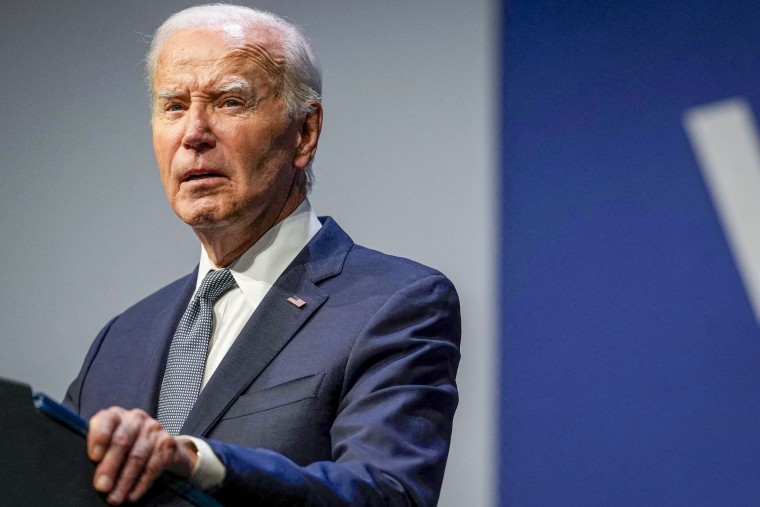
By Adeyemi Adekunle
On Wednesday evening President Joe Biden delivered his farewell address from the Oval Office. Seated at the Resolute Desk, his voice carried a blend of urgency and pride. He spoke of wildfires in California and floods that ravaged North Carolina. But more than anything, he spoke of hope—hope embedded in what he called “the most significant climate and clean-energy law ever…in the history of the world.”
For Emma Johnson, Biden’s words resonated deeply. A single mother from Detroit, Emma had recently secured a job at a clean-energy manufacturing plant producing electric vehicle (EV) batteries. It was a lifeline for her and her two children, a chance to build a future she once thought unattainable. “This job is more than just a paycheck,” Emma said. “It’s a second chance—for me and the planet.”
Emma’s story is just one among thousands of Americans whose lives have shifted under the ripple effects of Biden’s aggressive climate and clean-energy policies. The Inflation Reduction Act (IRA), passed in 2022, unlocked billions of dollars for clean-tech investments and renewable energy projects. From Emma’s plant in Michigan to sprawling solar farms in Nevada, Biden’s climate policies have turned the abstract battle against climate change into tangible opportunities for workers across the country.
But as Emma thrives, others wrestle with anxiety over what the future holds. Donald Trump’s imminent return to the White House brings an entirely different vision. Trump’s campaign promises to dismantle what he called “Biden’s green scam” struck a nerve with many fossil fuel workers, particularly in coal-reliant communities like Boone County, West Virginia. For people like Tim Walker, a third-generation coal miner, Biden’s policies represented an existential threat. “They talk about clean energy like it’s the future, but what about us?” Tim asked, his voice tinged with frustration. “It feels like we’re just being tossed aside.”
The stark divide reflects America’s broader struggle: while clean-energy jobs are rapidly growing, they often replace roles tied to carbon-heavy industries, leaving communities like Tim’s searching for ways to transition. And yet, advocates like Helen Martinez, an environmental justice organizer from Albuquerque, argue that Biden’s policies have already started reshaping the American workforce in ways that can bridge those gaps. “We’re not just fighting for the climate,” Helen explained. “We’re fighting for equity—for everyone to have a place in this new economy.”
For Helen, Biden’s legacy is one of pragmatic ambition. Under his leadership, renewable energy production boomed. Massive incentives brought wind farms to the Great Plains, solar installations to the Southwest, and cutting-edge research labs to urban hubs. Ben King, a climate policy researcher with Rhodium Group, highlighted the unprecedented progress, projecting that current policies could cut U.S. greenhouse gas emissions by up to 56 percent compared to 2005 levels by 2035. “This wasn’t just theoretical progress,” King said. “It’s measurable, transformative, and setting a new global standard.”
Yet, much of this progress feels precarious. As President Trump prepares to step into office, fears abound about the longevity of Biden’s accomplishments. In North Carolina, where solar energy now powers countless homes, Richard Gomez, a project manager for a renewable energy firm, worries about funding cuts. “We’ve built momentum,” he said, gesturing toward rows of solar panels. “But momentum doesn’t survive without support.”
Biden’s outgoing climate adviser, Ali Zaidi, remains cautiously optimistic. Speaking in his final week in office, Zaidi emphasized how certain elements of the clean-energy transition have gained a life of their own. “EVs and renewable energy aren’t just policies anymore,” Zaidi noted. “They’re market realities. The costs have come down, the infrastructure is there, and public demand is rising.”
Still, Zaidi admitted that fragile sectors—like advanced battery technology or climate-smart agriculture—could face setbacks without federal backing.
“The question isn’t just about emissions,” he warned. “It’s about whether America can lead in this global clean-energy race, or if we fall behind.”
Amid this uncertainty, individuals like Emma cling to hope. She believes that the human stories behind clean energy—of people who turned their lives around, like herself—will ultimately carry more weight than partisan politics. “When you feel the change in your own home, when it lifts you out of struggle, you can’t help but believe in it,” she said.
Even skeptics like Tim acknowledge the stakes. “I don’t know if clean energy’s the answer,” he admitted, leaning against his truck. “But I know my son deserves air he can breathe and water he can drink. Maybe that’s what we should all be fighting for.”
As Biden closed his speech- his voice carried a warning: “Powerful forces want to wield their unchecked influence to eliminate the steps we’ve taken to tackle the climate crisis. We must keep pushing forward.” Outside the walls of the Oval Office, those words have ignited both resolve and resistance in equal measure.
In the end, Biden’s climate legacy may not simply hinge on policies or data points but on people—on the Emmas and Tims of America who wrestle with the complex interplay of progress and tradition.
Their lives are the true battleground for the future of clean energy, and their choices, perhaps more than any president’s, will determine whether that future is one of redemption or regret.




